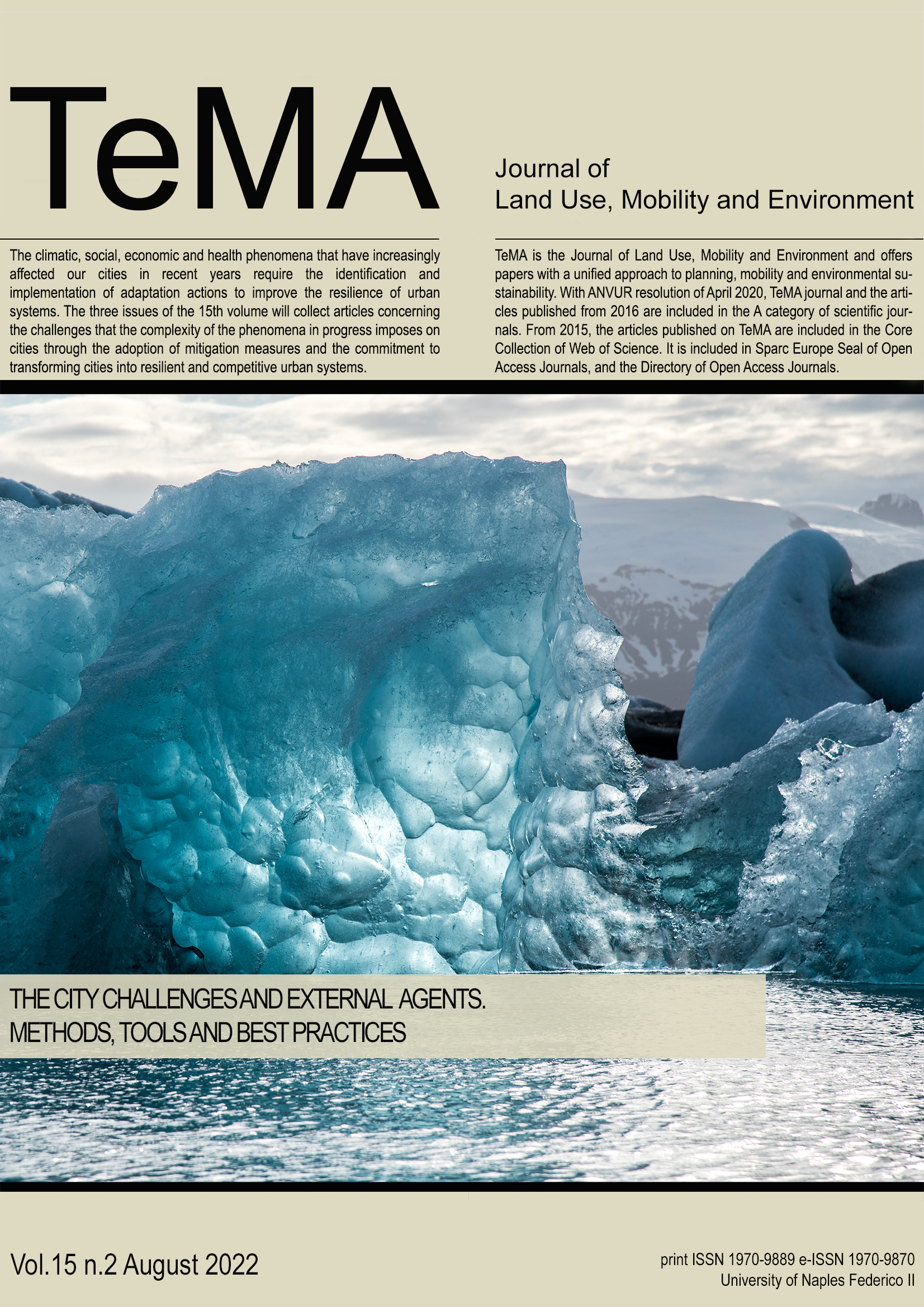Youth urban mobility behaviours in Tunisian Sahel
DOI:
https://doi.org/10.6093/1970-9870/8472Keywords:
Mobility, Spatial variability, Distance, Time, CostAbstract
In this paper, we analyze a 2019 survey data in order to gain a better understanding of the urban mobility behaviours of Tunisian young people aged from 15 to 29 years old, in the Tunisian Sahel region. For this study, we selected 739 participants, scattered over 40 delegations each with a different structure. We distinguish two age groups: from 15 to 19 years old (31.8%) and 20 to 29 (68.2%). The descriptive analysis was conducted on two spatial scales: The region named also the great Tunisian Sahel (scale 1) formed by three costal governorates (scale 2): Sousse, Monastir, and Mahdia. The variables analysis falls into two main categories: "daily trips volume coupled to the modal choice”, and “the trip trinomial”: Distance, Time, and Costs. Significant differences have been found in mobility practices, not only between social and spatial levels, but also between the youngest of 15-19 years old and those of 20-29 years old, thus emphasizing trends in travel habits as a function of age.
Downloads
Downloads
Published
How to Cite
Issue
Section
License
Authors who publish in this journal agree to the following:
1. Authors retain the rights to their work and give in to the journal the right of first publication of the work simultaneously licensed under a Creative Commons License - Attribution that allows others to share the work indicating the authorship and the initial publication in this journal.
2. Authors can adhere to other agreements of non-exclusive license for the distribution of the published version of the work (ex. To deposit it in an institutional repository or to publish it in a monography), provided to indicate that the document was first published in this journal.
3. Authors can distribute their work online (ex. In institutional repositories or in their website) prior to and during the submission process, as it can lead to productive exchanges and it can increase the quotations of the published work (See The Effect of Open Access)


